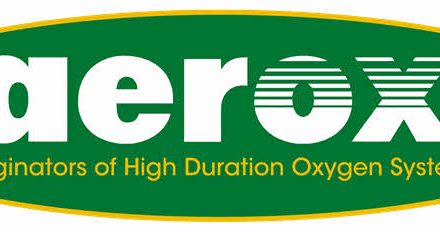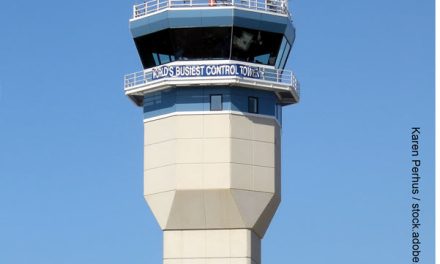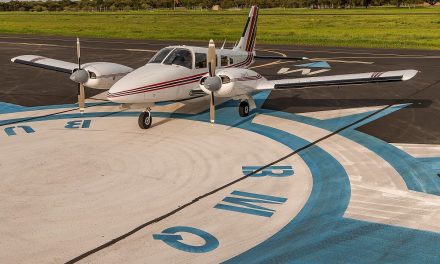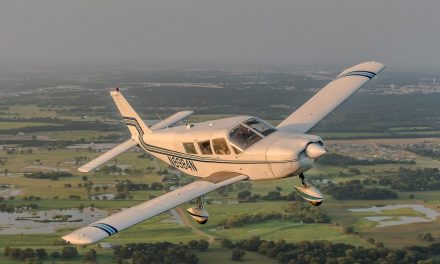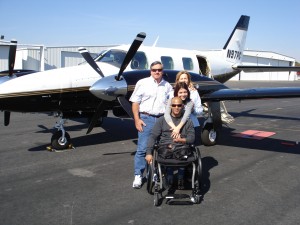 Veterans Airlift Command
Veterans Airlift Command
Connecting Planes, Pilots and Combat Wounded
By Sally Marks
Many pilots describe flying as a speedy, exhilarating and liberating experience. Unfortunately, numerous military heroes often find air travel a slow, painful and even humiliating ordeal.
When wounded soldiers return to the U.S. to be reunited with their families or need to travel to receive ongoing medical treatment for injuries sustained as a result of their military service, they face numerous transportation-related obstacles. For example, their bodies, often full of shrapnel, activate metal detectors in the airport. So before they can even board a plane they must submit to lengthy searches. At times, even their prosthetic limbs must be removed and checked by TSA agents.
Fortunately, things are improving through the efforts of pilots and plane owners who volunteer with the Veterans Airlift Command (VAC). The VAC provides free air travel to post-911, combat-wounded soldiers and their families via a national network of volunteer aircraft owners and pilots. While such transportation is often needed so combat wounded can receive medical treatment, the VAC facilitates air travel for other purposes as well.
VAC founder, Walter Fricke, has firsthand experience with what injured veterans go through. He’s also keenly aware of the vital role family visits play in a wounded warrior’s recovery. As a helicopter pilot during the Vietnam War, Fricke sustained grave injuries and was flown stateside to a hospital 700 miles from his hometown. His recovery was not easy or fast, but having his family there made a big difference. “My healing began in earnest when my family was able to gather the resources to make a trip to visit me,” said Fricke.
After retiring from a successful career in banking and with the memory of his experience permanently etched in his mind, Fricke established an organization that could help those wounded in combat in a way he knew would provide positive results.
Since the VAC flew its first mission in November of 2006, some 2,400 aircraft owners and pilots have flown more than 8,600 passengers to assist wounded veterans and their families. The word is spreading, but more pilots and plane owners are needed. Becoming a volunteer pilot is easy, as is the process for veterans to request travel. Simply register on-line at www.veteransairlift.org. As Fricke says in regard to the registration process, “We’re long on compassion, light on red tape.
To qualify as a VAC pilot, volunteers must have a valid U.S. pilot’s license, current medical, an instrument rating, as well as ratings appropriate to the aircraft the pilot will fly for the mission. Also, because most missions exceed 250 miles, high-performance aircraft are preferred. The airplane must have certification for instrument flight, a standard U.S. airworthiness certificate, and licensure in the normal or utility category. The pilot and/or plane owner is responsible for the aircraft’s compliance at all times with applicable federal and state regulations regarding insurance, maintenance, operations, and license. Pilots in Command typically supply their own aircraft and fuel.
Once registered, pilots receive email notices through the VAC when a wounded warrior has requested a transportation need. The email outlines where the wounded warrior is located, where they want to go, the date, how many will be traveling and other details, as well as some helpful personal information.
In the case of Dan Rogers, a frequent flier for VAC, his co-pilot is his wife, Cheryl. The North Carolina couple recently purchased a Citation Mustang but their earlier missions were aboard their Piper Cheyenne. Once the plane is airborne, Cheryl goes back to the cabin, talks to the veterans and their families, and offers homemade cookies she baked the night before.
“It’s more than a mission,” said Rogers, who, with his wife, owns Duotech Services Inc., a company that supports and repairs U.S. and foreign military electronics equipment. “We have become friends with many of the soldiers and their families. We stay in touch and sometimes even do little things to make their lives easier, like babysit their kids so they can have an evening out together.”
Johnny Johnston, Chief Pilot for Window World, Inc., America’s largest replacement window and home remodeling company, is another ardent fan of Walt Fricke and the VAC. Johnston learned about the organization in 2008 and quickly enlisted the support of his company. Window World has 65 missions—third most missions of any company. They have a dedicated goal to fly 12 missions a year and are looking for ways to increase that number.
When schedules work out, Window World tries to take one person from one of their offices throughout the U.S. and have him or her travel on a VAC mission aboard the company’s Cessna Citation Excel to see the importance of helping the VAC and the wounded warriors they serve. Now, many of the employees and franchise owners are chipping in to fund additional missions. The money is well spent. Due to the VAC’s lean operating budget they are able to convert every dollar donated to be worth approximately $10 of air travel.
Like other VAC volunteers, Window World has a strong desire to do even more than fly a mission or donate funds. Many volunteers want to make a personal connection with the disabled veterans and develop a deeper understanding of what they went through. Once a year, Window World invites a VAC passenger and his family to its annual reunion of more than 200 franchises and their staff. One wounded warrior, Major Kent Solheim of the United States Army Special Forces, who lost a leg in combat, was even a guest speaker at the company event.
“These combat wounded men and women are absolutely amazing,” said Johnston. “Even with all they’ve been through they’re so positive. They believe in what they do in service to our country and most have said they would do it again. They are true heroes. And I’m so thankful that Walt Fricke made it possible to help these heroes through the VAC. I don’t know of any organization that is better. There might be some that are almost as good, but none are better.”
Both Rogers and Johnston look forward to flying additional missions and encourage others to do the same. However, Rogers warns: “One mission and you’ll be hooked!”
Rogers’s statement is certainly true for Gerald Johnson, an entrepreneur who completed his first mission with the VAC and is eagerly awaiting the opportunity to fly another. Johnson’s mission was from San Antonio, Texas, to Kingman, Arizona, aboard a Citation II Johnson co-owns with business partner, Jessica Wolman. Gordon Davis is the chief pilot and Lucky Benvin manages and maintains the craft. The compassionate mission involved transporting Sgt. Tyrell Manakaja and his fiancé, Keira, and their two young sons, Maximus (5) and Maddox (1), to visit their families in Kingman for Christmas and New Year’s Day.
Manakaja, a resident of Peach Tree, Arizona, was wounded in Iraq in 2009 when an explosively formed projectile (EFP) hit his HMMWV (Humvee). EFPs are designed to penetrate armor at standoff distances. Manakaja had his right arm reconstructed with titanium pins, as well as additional reconstructive surgeries to help repair burns and lacerations to his face. Although he is undergoing additional treatment, doctors say he will have permanent nerve and muscle damage. Still, Manakaja is grateful. “I have to thank Jerry and the VAC for helping us out,” said Manakaja. “The VAC has an awesome free transportation program for wounded veterans like me. A lot of us are full of shrapnel or missing limbs. It’s hard to stand in line and travel by conventional means. It was pretty cool to just get on the plane and go.”
Johnson, an internationally renowned hair stylist, operates a chain of cosmetology schools throughout the U.S. (International Academy of Hair Design in Arizona, ITS Academy of Beauty in Texas and Oklahoma, Olympian University in New Mexico and Hair Benders Academy in Florida.) Running the schools has the silver-haired Scottsdale, Arizona, resident frequently taking to the air to ensure the award-winning cosmetology schools run smoothly. Now, before Johnson plans a business trip he checks to see if he can incorporate a VAC mission into the flight plan.
He and other VAC volunteers receive email blasts detailing the specifics of each mission and the VAC works out the logistics. Sometimes pilots split their mission. When a plane is only going part of the way to a desired destination, the VAC coordinates with other volunteers to complete the journey. This was the case on the San Antonio to Kingman mission when another wounded veteran, Matthew Pundyk, boarded the Citation II. Pundyk arrived in Kingman from Sacramento, California, courtesy of another volunteer pilot. Pundyk then boarded Johnson’s plane to reach his final destination in San Antonio. Pundyk is currently recovering from surgery from injuries he sustained while in active duty.
Johnson plans on serving more missions with the VAC and hopes others will follow in his airstream. “Having access to a corporate plane puts me in a unique position to help these brave men and women,” said Johnson. “They made a huge sacrifice protecting our country and my involvement with the Veteran’s Airlift Command gives me the opportunity to show my gratitude in a very meaningful way. I would also like to make a call out to other pilots and private-plane owners to get involved by volunteering for a mission.”
In addition to passengers and piloted planes, the VAC needs additional funds to remain in operation. Donations are accepted through their website. Since the VAC is a 501© (3) organization, donations are tax deductible.
For more information, visit www.veteransairlift.org or email info@veteransairlift.org.

